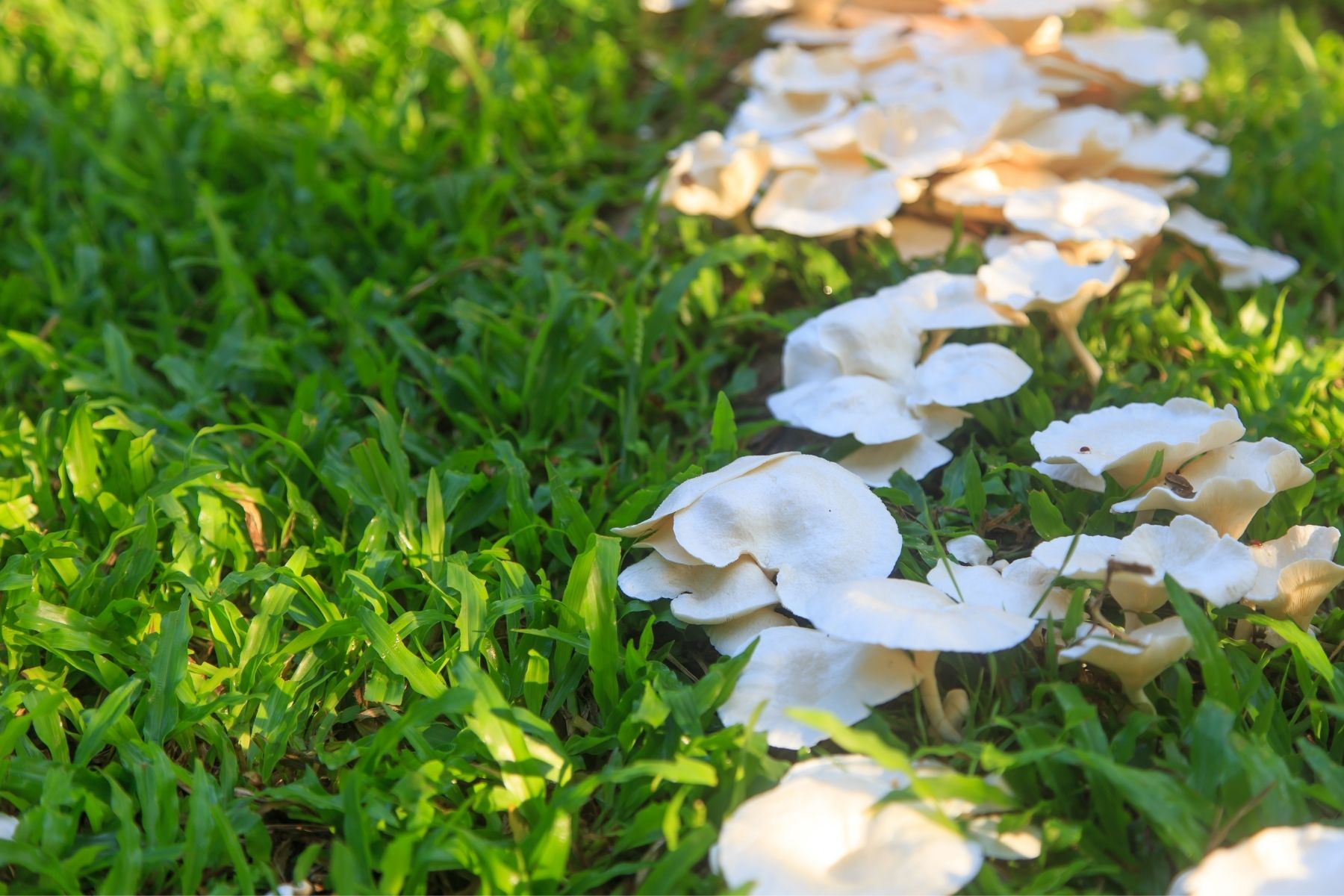Last Updated on April 4, 2024 by Real Men Sow
Fungi can not only recycle decaying and dead matter but can also parasitize animals and plants. They cast spores into air and come in many sizes and shapes, making it easier to identify them.
It’s fun to spot, identify and even forage wild mushrooms throughout the autumn. You’ll be able to see wild mushrooms popping up in the grass and leaf litter in many shapes and colors if you keep your eyes focused on the ground. Some people also want to identify and get rid of mushrooms on their lawn which is also discussed in our previous post.
Did you know, that you can also grow your mushrooms in coffee grounds for indoor gardening?
Identify Lawn Mushrooms
It can be difficult to identify mushrooms, as many have similar and sometimes deadly looks. To help you find the right ones, it is a good idea for you to get a mushroom guide or book. They are especially useful for those who plan to forage in order to make sure you’re only picking the best mushrooms.
Types Of Lawn Mushrooms And How To Identify Them
Field mushroom (Agaricus campestris)
| Top | 4cm-10cm Wide, Convex, Expands slowly, Smooth White then scales peel over time |
| Stem | Short and White, Narrowing at the base |
| Ring | Thin |
| Gills | Pink to Chocolate Brown to Deep Black |
| Edibility | Very Edible |
Yellow-staining mushroom (Agaricus xanthodermus)
| Top | 8cm-15cm Wide, Globe Shaped then to Broad-domed, White to Greyish Brown, Becomes Scaly |
| Stem | White, Bulbous at the base |
| Ring | Broad and Hangs Off, Turns Yellow if Bruised |
| Gills | Pink to Grey |
| Edibility | Poisonous |
Fly agaric (Amanita muscaria)
| Top | 8cm-25cm Wide, Broad-domed, Bright Orange or Scarlet then sometimes Brownish or Yellow, Has White Warts, Easily Washed off |
| Stem | Tall |
| Ring | Hanging Skirt-like |
| Gills | White and often found under birch or pine trees |
| Edibility | Very Poisonous |
Shaggy ink cap (Coprinus comatus)
| Top | 5cm-15cm Wide, Pale, Wooly Scales, Bell-like shape then turns Conical |
| Stem | Up to 20cm Tall, Narrow |
| Gills | White to Pink to Dissolving Color to Dripping Black |
| Edibility | Edible, Tasty before turning dripping black, mildly poisonous if consumed with alcohol |
Fairy ring mushroom (Marasmius oreades)
| Top | 2cm-5cm Wide, Pale Brown, Convex Dome then becomes floppy, Edges are wrinkled or grooved |
| Stem | Narrow |
| Gills | Off White then gradually expands by rings |
| Edibility | Edible, but easily confused with a poisonous specie |
Sulfur tuft (Hypholoma fasciculare)
| Top | 4cm-8cm Wide, Convex Dome, Bright Sulfur Yellow with Orange tints, Has a brown center |
| Stem | Long and Fibrous. Large Tufts Sprouts,Grows at tree stumps and logs. |
| Gills | Yellow to Green and Brown |
| Edibility | Inedible |
Common ochre russula (Russula ochroleuca)
| Top | 4cm-10cm Wide, Convex to Flat Top, Dull Yellow, Becomes Wrinkled or Ridged |
| Stem | Hollow and Soft |
| Gills | White or Cream |
| Edibility | Edible but not yummy |
Liberty cap (Psilocybe semilanceata)
| Top | 1cm-2cm Wide, Conical, Pale Yellow with Green Tint, Slimy, Rolled Edged before Maturity |
| Stem | White, Tall, Thin, Wavy |
| Gills | Dark Purple-Brown |
| Edibility | Also known as the Magic Mushroom, therefore, inedible and hallucinogenic |
Giant puffball (Calvatia gigantea)
| Top | Up to 1m Wide, Irregular Round, White to Yellowish, White Skin Splits to Emit Brown Spores |
| Edibility | Edible before Spores Form |
Types Of Wild Edible Mushrooms
- Giant puffball (Calvatia gigantea)
- Hedgehog fungus (Hydnum repandum)
- Wood ears (Auricularia auricula-judae)
- Scarlet elf cups (Sarcoscypha coccinea)
- Cauliflower fungus (Sparassis crispa)
- Field blewits (Lepista personata)
- Porcini (Boletus edulis)
- Oyster mushroom (Pleurotus ostreatus)

